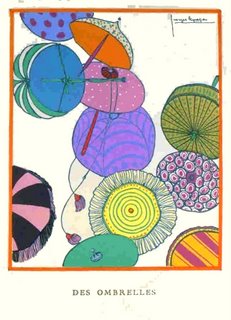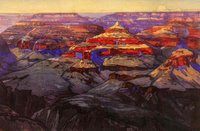après le deluge
 takehisa yumeji was a restless, flamboyant, and hopelessly romantic artist and poet. married three times, twice to the same woman, his search for a romantic ideal took him around the world, studying, observing, and probably falling in love all over again.
takehisa yumeji was a restless, flamboyant, and hopelessly romantic artist and poet. married three times, twice to the same woman, his search for a romantic ideal took him around the world, studying, observing, and probably falling in love all over again.what his wanderings led to was this: he essentially revolutionized japanese art, bringing it into the 20th century.
shin hanga already existed: a transitional era with one foot still in the style of printing that hiroshige, hokusai, and utamaro did, and one foot in styles of the west. takehisa yumeji is credited for having initiated sosaku hanga, which combines traditional japanese iconology with some first steps towards integrating the modern art movements happening in the rest of the world.
be sure to note the shadows below the umbrellas; i like the guy in the cap drinking from a bottle! i don't have a specific date on this but it is from the taisho era (1912-1926).
 rea irvin created the cover for the new yorker. many of his designs feature asian elments. this one is from 1947.
rea irvin created the cover for the new yorker. many of his designs feature asian elments. this one is from 1947. in 1912 george lepape did the illustration for a periodical called 'gazette du bon temps.' it is only one of many of his wonderful illustrations. like yumeji, he frequently chose beautiful women for his subjects. yumeji was called the utamaro of the taisho era.
in 1912 george lepape did the illustration for a periodical called 'gazette du bon temps.' it is only one of many of his wonderful illustrations. like yumeji, he frequently chose beautiful women for his subjects. yumeji was called the utamaro of the taisho era.do i think these were mimics? probably not, at least not specifically. but as another blogger just wrote me and said, 'japan is just a state of mind.' at that moment in history, it was. and that was it's best, and its worst, quality.
Labels: georges lepape, irvin, takehisa yumiji



